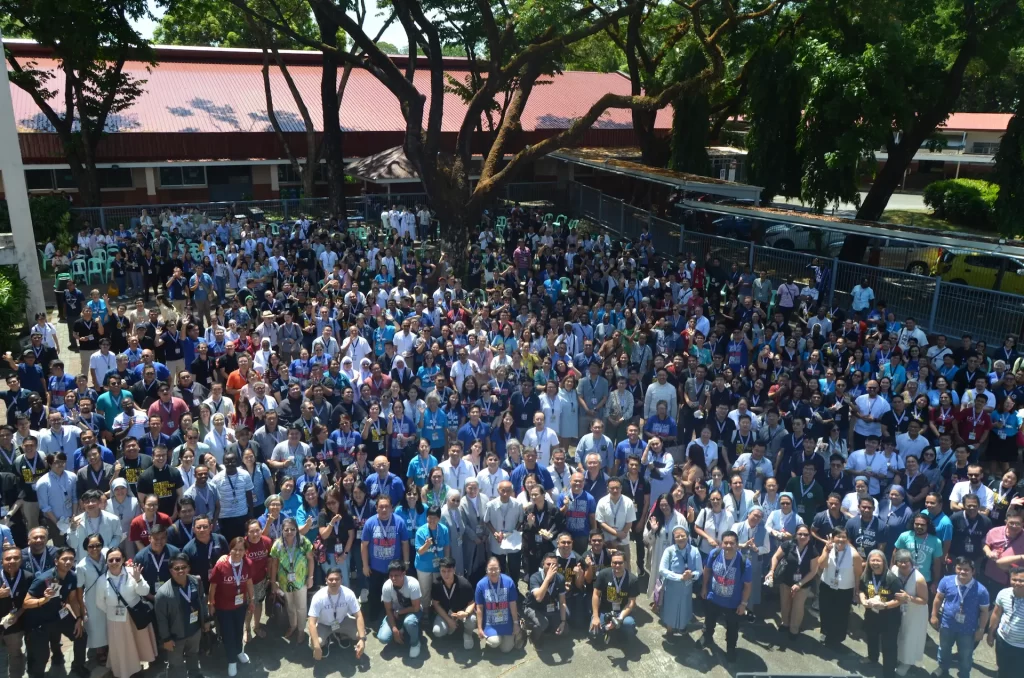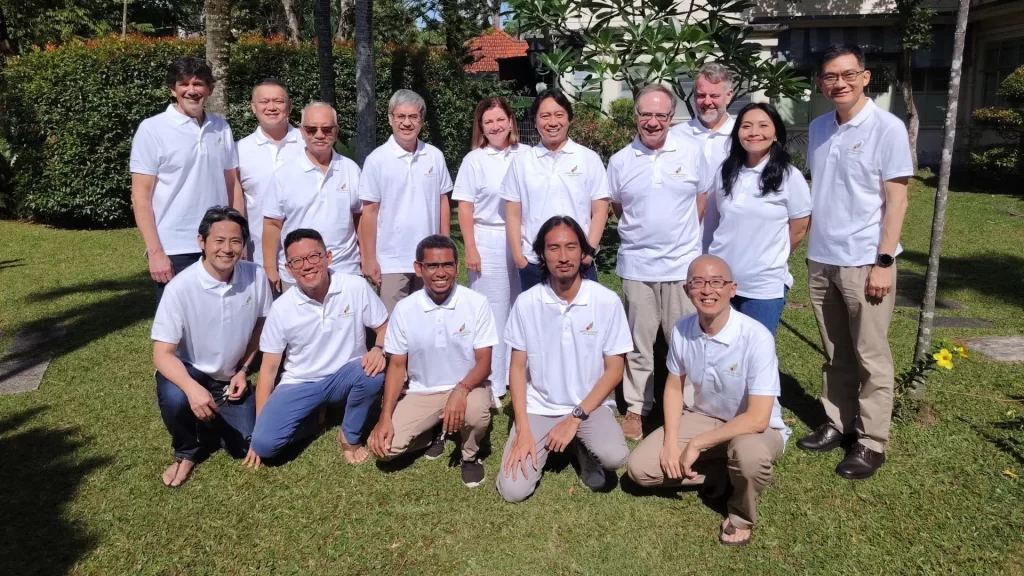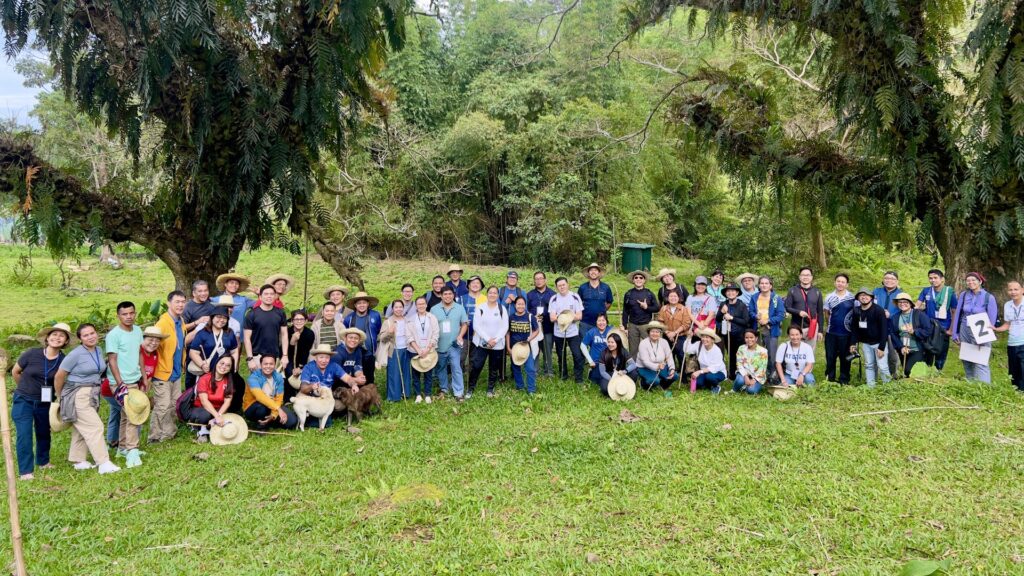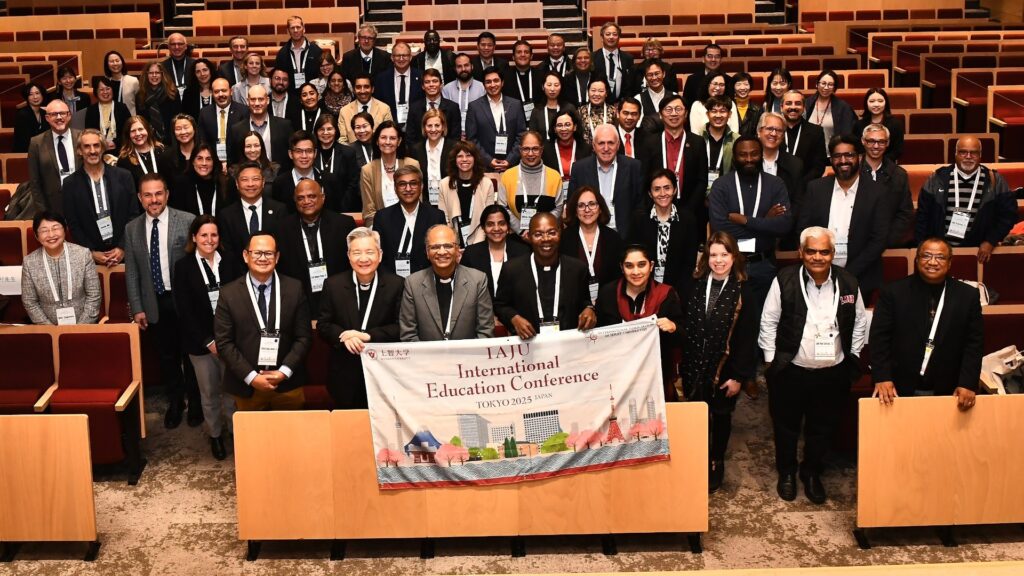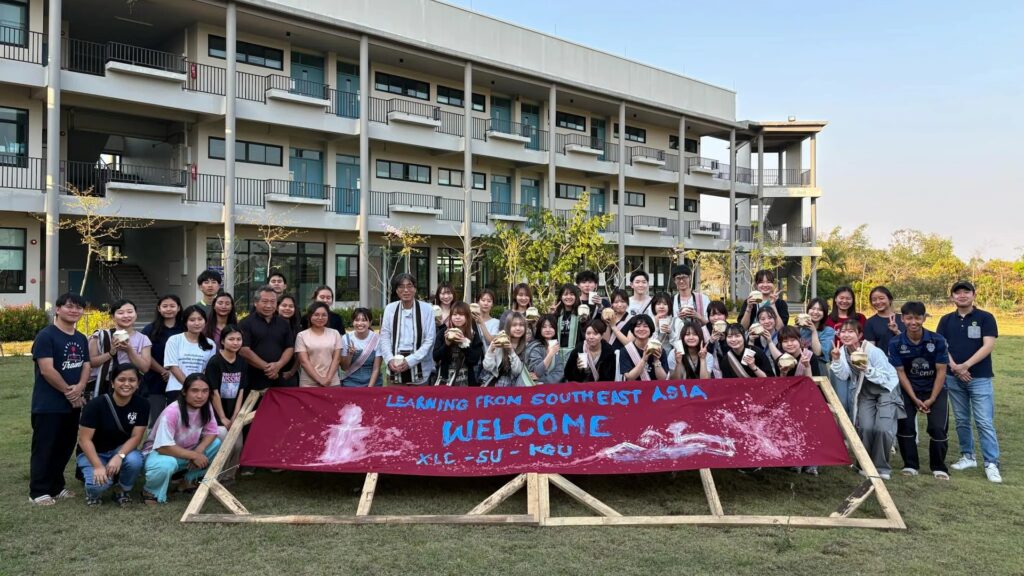A Jesuit novice from the United States reflects on the five months he spent in full-time apostolic work in Micronesia, in the Long Experiment that is but one of a series of experiments in which Jesuits participate during their formation. Tim Casey nSJ taught at Yap Catholic High School in Micronesia.
Before I entered the Jesuits, I had been a high school teacher. I worked in two affluent school districts in the metro-Boston area and I felt confident that I had become a good teacher. I knew that there were better teachers than I, but I was confident that I was good. And so when the novice director asked what I wanted to do for long experiment, teaching was not at the top of my list. In the novitiate, I had enjoyed branching out into other ministries. I had worked in the jails and prisons of New York State, I had helped administer an annotated version of the Spiritual Exercises and I had worked as a hospital orderly in the Bronx. I remember feeling lukewarm about returning to my former profession, and made my preferences known to the novice director about what would be best for long experiment.
The Jesuits have an old Latin expression, agere contra, which roughly translated means to go against the grain. By this, St. Ignatius of Loyola meant that if you feel a certain resistance to something in your life, then it might be beneficial for you to engage those feelings, trying to see what you are resisting and why you are resisting it. And so when my novice director asked me to teach during my long experiment, I said that I would be willing, but I was not particularly excited about the prospect. However, I did make one request of him: Could this teaching position be in some way unconventional and different from my former career? He honoured my request. I was sent to a remote island in the North Western Pacific Ocean to teach in a newly established high school in Yap, Micronesia.
Yap is part of the Federated States of Micronesia, a place that has been called “the edge of the world” by a Jesuit who spent most of his life here. It is one of four states that make up the FSM. I didn’t know much about Micronesia, except that the Jesuits ran a prestigious school on the island of Chuuk called Xavier High School. But that was not where I was headed. Where was this place?
The local church on Yap had been trying for a number of years to open a Catholic high school. In the summer of 2011, two New York Province Jesuits were sent to Yap to make good on the promise of Catholic education and opened Yap Catholic High School in August of that year. They had four teachers (including themselves), two borrowed classrooms, and 34 students. I would become the fifth teacher, teaching Science, Social Studies, moderating the robotics club, acting as an assistant basketball coach, and doing a variety of other odds and ends to aid them in getting this school off the ground and running.
It is an intriguing place, a place that seems to be unencumbered by the events that have transpired in the other parts of the globe. The expression, “An island onto itself” seems to be fitting in more ways than one.

In addition to my teaching duties, there was a practical element to my time in Yap; the task of actually helping to build a new school. Nearly every Saturday morning, community members would gather at our building site with machetes, shovels, chainsaws, picks, and a variety of other tools. My Saturdays were spent clearing land for the new buildings, picking up garbage that had been dumped and left many years before, and driving a pick-up truck filled to the brim with volunteers who desired to help but had no transportation. Local women provided lunch on plates woven together from palm leaves. The fare: fish bellies, tarot, coconut crabs, and yams. As the Saturdays piled up, I began to realize just how much I was enjoying these “clearings,” as we called them. I began to look forward to them as a weekly event, almost like a block party. As the buildings began to rise, it became very clear how much the community was rallying around this school, taking part in its construction, and owning it. This is truly a project where many hands contributed many hours of labour. It is something we can all be proud of!
My experience in Micronesia was a blessed time. St. Ignatius of Loyola tells retreatants in the conclusion of the Spiritual Exercises “to ask for an interior knowledge of the many gifts we have received, in order that, being entirely grateful, we may be able, in all things, to love and serve God.” Ignatius’ statement, more than anything I am able to write, best describes my time in Micronesia. In the smiles of the people whom I have met, in the faces and the daily interaction with the students of YCHS, I have witnessed the presence of God among us, the risen Jesus. What a great gift! I was sent to Yap as a teacher, to help students learn, to give something of myself and my talents. But, as the prayer of St. Francis states, “It is in giving that we receive.” As I leave Yap, I leave with a deeper knowledge of this gifted time, and of the many gifted relationships I have developed and come to value. It is here that the vowed life begins to make sense to me, and that choice is confirmed and strengthened in the faces of those with whom I have met and come to love. Although I came here as a teacher, I am comforted by the knowledge that I leave having received much more than I ever bargained for. Kammagar! (Thank You.)
Source: National Jesuit News
Tim’s full reflection can be found in the vocations website of the New York, New England and Maryland Province of the Society of Jesus. To read it, click here.


